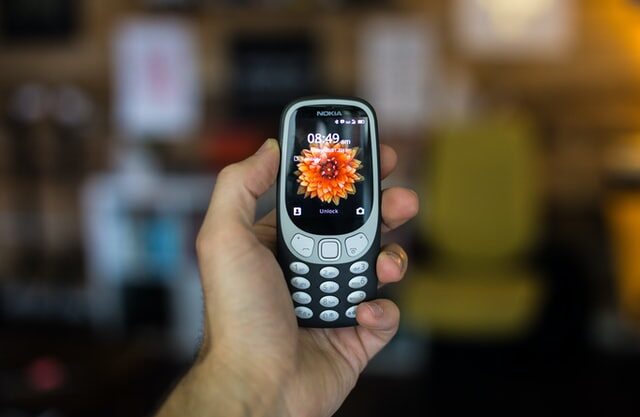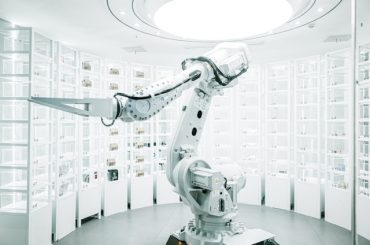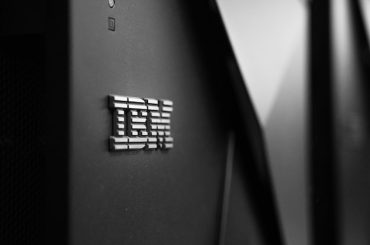The 1990s were an interesting period for product-based companies in America. The personal computer became the product of the century. The company that created the segment – IBM, had all but dropped out from the segment. The market had consolidated between a few players that would go on to become household names.
Apple was trying to establish itself in the PC market with its bespoke Macintosh series taking on Compaq and other Microsoft-based systems. The key value proposition for Apple was creating beautiful computing devices with unrivaled functionality as a seamless extension of their consumer’s creativity.
To create these computers, the interface, and software powering the user experience Apple turned to design thinking which was still in a nascent stage in the 90s.
Despite the emphasis on design thinking and creativity, Apple could not create a sufficient differentiation in its product offerings. Customers using their computers for business kept switching from Apple to Microsoft enabled PCs which offered more functionalities. Apple faced prospects of becoming a niche product company that could only cater to artists.
To avoid this, they tasked a newly formed start-up from Stanford with the task of creating a unique value proposition. The company was IDEO, a start-up based on design thinking as a core strategy, and the Apple Mouse that they would go on to create would revolutionize the computing industry.
IDEO: The mouse with a vision amongst the computing giants.
Design thinking as a strategy began at Stanford in the 1980s and quickly took root in the products business. IDEO was established in the 1990s by David Kelly, a Stanford professor, as the premier design consultancy in the world. IDEO boasted of a unique design thinking-based product consulting methodology and quickly captured major clients across Silicon Valley. Eventually, their excellent outputs helped them capture the big whale – Apple itself.
The ask from Apple was simple – IDEO had to create a new computer navigation device from scratch. IDEO went above and beyond to produce a revolutionary piece of technology that would go on to become the industry standard for decades.
Several companies had tried their hand at creating a computer navigation device – and failed. What set IDEO apart from the rest was companies like Xerox viewed it as a technological challenge while IDEO viewed it as a design challenge. Xerox and others tried to create a new technology offering that was foisted onto the userbase.
IDEO incorporated user feedback to design a product that would delight the users.
To do this, IDEO created a cheap but efficient prototype that was not technologically complex. Instead of using complex gyroscopes and sensors, the first prototype was a simple plastic ribcage with a ball and tracker. The other improvements were added after testing and a highly consultative design process. The initial design was refined, tactile and audible buttons were added along with a rubberized coating for the ‘track ball’. The changes were tested rigorously through simulations and physical tests and finally resulted in the ubiquitous ‘Mouse’ that we know and use today.
The addition of the Mouse as a navigation device drastically improved the usability of the Apple computers. From being a struggling laggard with the least market share in the computing segment, Apple would go on to dominate the segment in only a decade.
So, what exactly is Design Thinking Strategy and how did IDEO perfect its design consulting process?
IDEO’s executive Tim Brown defines Design Thinking as a human-centered approach to innovation. Design thinking draws on the designer’s creativity to integrate requirements, possibilities, and business realities to deliver perfect and usable products.
Design thinking creates desirable products which are technologically feasible and economically viable by incorporating an iterative design process with 2-way communication and real-time intervention from clients. The traditional approach to product design and strategizing concentrates more on documentation and processes than on the final output.
Like the project management triangle of Scope – Schedule – Cost constraints, traditional designing is affected by a triangle of Feasibility – Usability and Business success. It is a rare occurrence to design a completely feasible product, completely usable and provides success at the business level.
Design Thinking ensures a more strategic approach to product design that enables you to churn out products that meet all three criteria as a natural outcome of your design process. World-changing products are no longer hit or miss efforts, and
your company does not remain a one-hit-wonder.

IDEO did not invent the design thinking process or strategy, nor was it the first company to offer design consulting to high-profile clients. IDEO excelled in using design thinking strategy in complicated products to simplify deliverables that could be worked on in excruciating detail. IDEO encourages its consultants to think like designers and inventors – out-of-the-box ideas are encouraged.
The process is structured to deliverable prototypes early and failure is not penalized as it leads to learning outcomes and better design. This design-friendly approach embraces empathy, optimism, creativity, and even ambiguity in design to deliver successful products.
The results are there to see – IDEO has been the brains behind the Apple Mouse, a failsafe pill caddy called PillPack, the first wearable breast pump, the MassMutual project, IKEAs futuristic kitchen products, the child seat shopping cart that’s a standard in the USA and many more products.
Design Thinking as a strategy is transferrable to other businesses too
Design Thinking is now a key strategy at many organizations – but only a few really use it in its truest sense. Customer-centric design is a perilous path to follow as in many cases; even the customer is not aware of their exact requirements. Only a few companies have succeeded in truly implementing design thinking, but this success has provided exponential benefits and sustainable value.
One of the most valuable enterprises in the world – Alphabet Inc. swears by design thinking to develop disruptive products to avoid stagnation. The parent company of Google has a well-structured brainstorming process that enables its high-performing employees to solve problems with peerless efficiency. To formalize design thinking and creativity in their products they have instituted ‘Google Garages’ for skunkworks projects.
To encourage employees to think like designers, they have a famous 20% rule wherein employees set aside working time for side ideas and projects. These endeavors to create a hustling culture have led to well-established products like AdSense and Gmail! From starting in a small garage in Menlo Park (of the Thomas Edison fame) to starting the largest collaborative workspace as a ‘Digital Garage,’ Google has come a long way.
IBM which has received the world’s highest number of patents for 28 years in a row has multiple innovation labs where design thinking helps IBM and their clients solve real-time problems. PepsiCo famously began a transformation from being a food and beverage company to being a nutrition solutions company by using design thinking as a strategy. Former CEO Indra Nooyi (in her own words) gained a new perspective by looking at their products as a mother rather than a CEO.
This razor-sharp clarity led to enough impetus from the top to change the way products were designed, with design now being at the forefront of product strategy. PepsiCo appointed its first Chief Design Officer in 2012. Since then, they have delivered several successful products and have had massive success. Simple measures like making sure their products incorporate female viewpoints and don’t alienate the female consumers were instituted. These innovations have driven the stock price from the 65$ mark to the 95$ mark in 2 years.
NASA’s largest services contractor Jacobs Engineering was amongst the first players in the heavy engineering segment to utilize design thinking. Creating a stakeholder-centric design process has paid rich dividends for the company as 90% of its $20 billion projects in management come from repeat business from loyal clients.
This process isn’t limited to tangible products but can be applied to user experiences as well. Airbnb famously implemented design thinking in its early days to ensure the user experience was structured in such a way to enhance the guest spaces on display positively. Uber Eats, whose India business was recently acquired by Zomato, is famous for deploying its app development team in the city they represent so that the food on display matches the city’s vibe and culture.
These examples and several others demonstrate that the utility of design thinking as a strategy is limited by the strength of the company’s design culture. Companies that have implemented design thinking in their company culture have consistently hit the mark with their consumers, with the right products sold at the right price and place with the right promotions.
-AMAZONPOLLY-ONLYWORDS-START-
Also, check out our most loved stories below

Why did Michelin, a tire company, decide to rate restaurants?
Is ‘Michelin Star’ by the same Michelin that sells tires, yes, it is! But Why? How a tire company evaluations became most coveted in the culinary industry?

Johnnie Walker – The legend that keeps walking!
Johnnie Walker is a 200 years old brand but it is still going strong with its marketing strategies and bold attitude to challenge the conventional norms.

Starbucks prices products on value not cost. Why?
In value-based pricing, products are price based on the perceived value instead of cost. Starbucks has mastered the art of value-based pricing. How?

Nike doesn’t sell shoes. It sells an idea!!
Nike has built one of the most powerful brands in the world through its benefit based marketing strategy. What is this strategy and how Nike has used it?

Domino’s is not a pizza delivery company. What is it then?
How one step towards digital transformation completely changed the brand perception of Domino’s from a pizza delivery company to a technology company?

BlackRock, the story of the world’s largest shadow bank
BlackRock has $7.9 trillion worth of Asset Under Management which is equal to 91 sovereign wealth funds managed. What made it unknown but a massive banker?

Why does Tesla’s Zero Dollar Budget Marketing Strategy work?
Touted as the most valuable car company in the world, Tesla firmly sticks to its zero dollar marketing. Then what is Tesla’s marketing strategy?

The Nokia Saga – Rise, Fall and Return
Nokia is a perfect case study of a business that once invincible but failed to maintain leadership as it did not innovate as fast as its competitors did!

Yahoo! The story of strategic mistakes
Yahoo’s story or case study is full of strategic mistakes. From wrong to missed acquisitions, wrong CEOs, the list is endless. No matter how great the product was!!

Apple – A Unique Take on Social Media Strategy
Apple’s social media strategy is extremely unusual. In this piece, we connect Apple’s unique and successful take on social media to its core values.
-AMAZONPOLLY-ONLYWORDS-END-
















